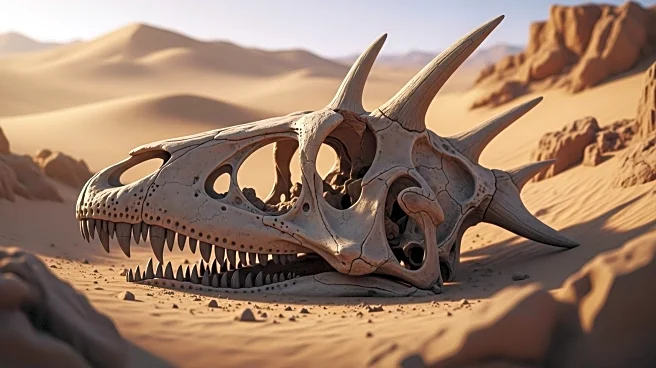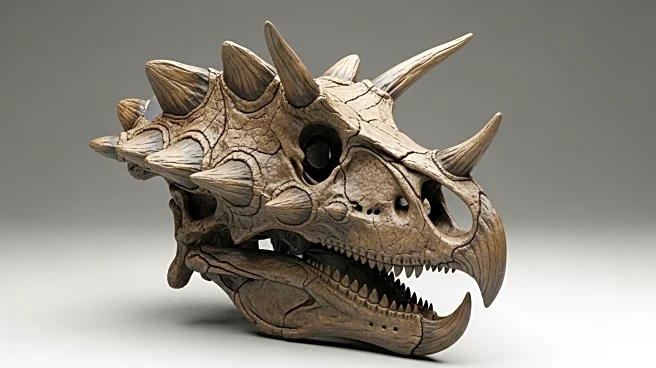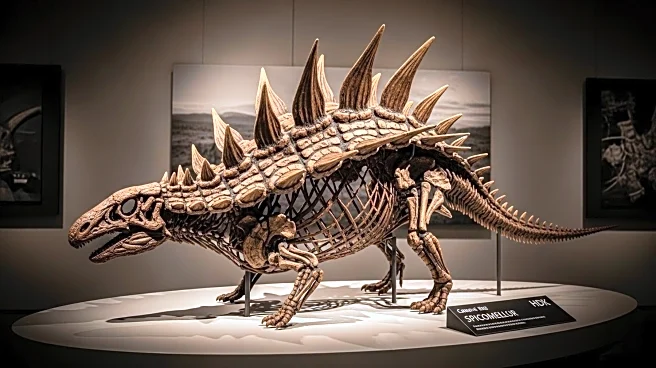What's Happening?
A team of paleontologists has uncovered a unique dinosaur species, Spicomellus afer, in the Middle Atlas Mountains of Morocco. This 13-foot-long dinosaur, dating back to the Middle Jurassic period, is the first ankylosaur found on the African continent. Spicomellus is distinguished by its bony collar with three-foot-long spikes, a feature not seen in any other known vertebrate species. The discovery, published in Nature, provides new insights into the evolution of ankylosaurs, suggesting that their famous tail weapons developed much earlier than previously thought. The dinosaur's armor, which includes diverse plates and spikes, may have served both defensive and display purposes.
Why It's Important?
The discovery of Spicomellus afer is significant for paleontology, as it challenges existing theories about the evolution of ankylosaurs and their defensive mechanisms. This finding highlights the importance of African dinosaurs in understanding global prehistoric biodiversity. The unique features of Spicomellus, such as its spiked collar, offer new perspectives on how these dinosaurs adapted to their environments and interacted with predators and rivals. This research underscores the need for further exploration and study of African fossil sites, which may hold more undiscovered species that could reshape scientific understanding of dinosaur evolution.
What's Next?
Further research is expected to focus on the detailed analysis of Spicomellus's anatomy and its ecological role during the Middle Jurassic period. Paleontologists may conduct additional excavations in Morocco to uncover more specimens and gather comprehensive data on the region's prehistoric fauna. The findings could lead to revisions in the classification and evolutionary timeline of ankylosaurs. Additionally, the study may inspire new investigations into the evolutionary history of other dinosaur species in Africa, potentially revealing more unique adaptations and interactions within ancient ecosystems.
Beyond the Headlines
The discovery of Spicomellus afer raises questions about the evolutionary pressures that led to such elaborate armor in early ankylosaurs. It suggests a complex interplay between defense mechanisms and social behaviors, such as mating displays. The absence of similar features in later ankylosaurs indicates a shift in evolutionary strategies, possibly due to changes in predator dynamics or environmental conditions. This finding also emphasizes the role of Africa as a crucial region for understanding dinosaur evolution, challenging the traditional focus on North American and Asian fossil sites.












